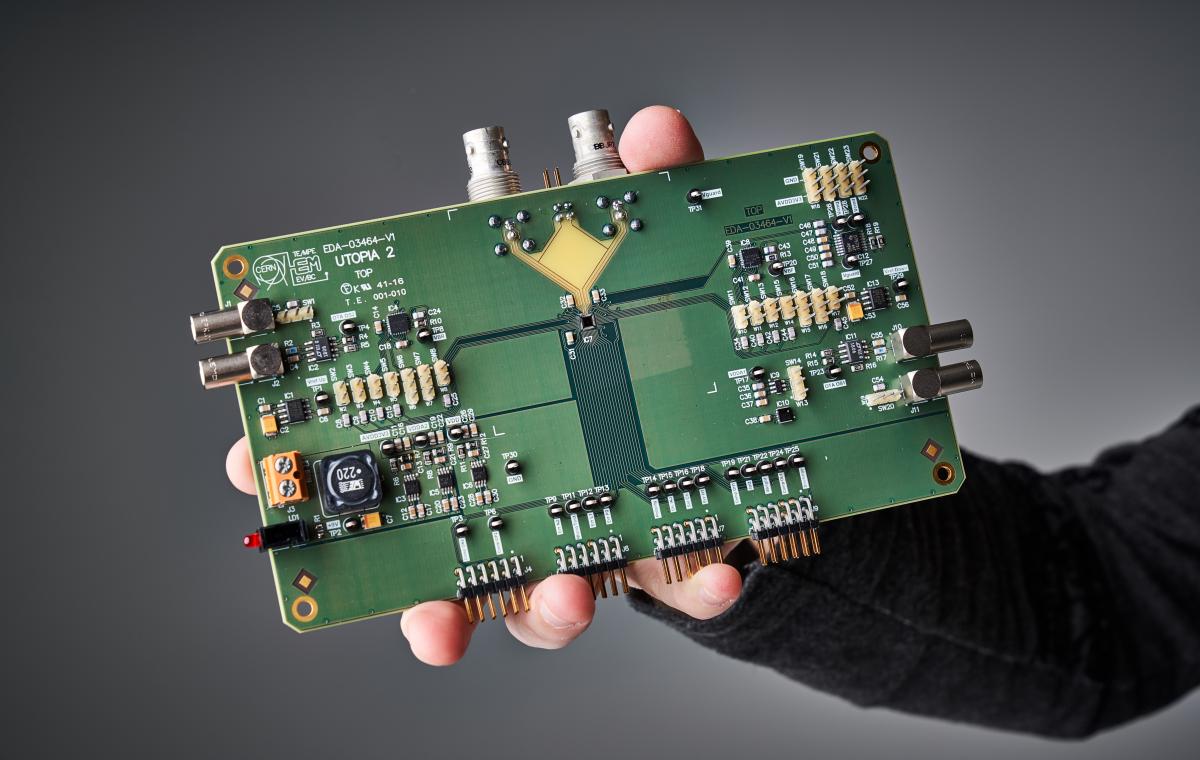Designing Utopia – An Ultralow Picoammeter
There are various applications where the output of a sensor is a low current. In some cases like in ionizing radiation measurements, device characterization, leakage current measurements and biosensing instrumentation, the current that has to be measured can be as low as few femtoamperes. However, designing a measuring digitizer for the femtoampere range is not a trivial task.
One could ask, what is the smallest current that can be accurately measured using a readout front-end circuit ? To answer this question we should start from the leakage current of a minimum size MOS transistor in a standard CMOS process. The net leakage current for example in AMS 0.35 μm technology can be in the order of hundreds of femtoamperes.
The radiation monitors that are used at CERN for radiation monitoring are based on ionization chambers whose output current spans over more than 9 decades starting from 1 fA and extending to 5 μA. The required resolution is also 1 fA that is equal to a flow of about 6250 electrons/second.
Measuring a current that is equal to 1 femtoampere is challenging especially because of the main limitation, the leakage currents that are injected into the circuit’s input from various sources. But this is not the only constraint for the ionization chamber’s readout system. Measuring over such a wide dynamic range requires high speed so that the system can react to a current up to 5 μA: 5000 million times bigger.
We named this Application Specific Integrated Circuit (ASIC) Utopia, for two main reasons. Firstly because we designed an Ultra-low Picoammeter, but mainly inspired by the demanding requirements. Measuring currents down to 1 femtoampere set a big challenge. The final measurements and the characterization of the first demonstrator, the Utopia 1 ASIC, made Utopia a reality.
Based on the architecture of a current to frequency converter that has been used in the past for front-ends for radiation monitoring, we designed a demonstrator with four channels that differ slightly in order to isolate, measure and evaluate the different sources of leakage currents. The net leakage was related to the input switches, the Electrostatic Discharge (ESD) protection diodes, the adjacent pins voltage, the Printed Circuit Board (PCB) and finally the cable and the connector.

Figure 1: Microscopic picture of the Utopia 2 ASIC that is designed in AMS 0.35 μm technology and has a die size of 2.75 mm x 2.75 mm.
Circuit techniques that can decrease the subthreshold leakage current were used along with methods to minimize the extrinsic leakage current sources in system level. After the characterization of the ASIC, the dominant source of leakage current proved to be that of the electrostatic discharge protection. This also has a strong temperature dependence doubling every 8 °C.
In order to overcome this problem, the Utopia 2 ASIC was designed using an active leakage current compensation scheme. A dummy channel that replicates the input structures of the measuring channel and is designed matched to it, can subtract the leakage current from the measuring channel’s input. This scheme provides a leakage current-free measuring channel that digitizes the current that is related to the incident radiation.
After solving the femtoampere current obstacle, the ASIC had to measure current up to 5 microamperes. The speed of the Operational Transconductance Amplifier (OTA) was increased and an automatically selected second range was introduced in order to be able to cover the wide measurement range.
This state of the art ASIC, was characterized at METAS, the Swiss Federal Institute of Metrology, where measurements down to 1 femtoampere took place.

Figure 2: The Utopia 2 PCB that was used to characterize the Utopia 2 ASIC.
This work is the outcome of the collaboration between the EP-ESE group, the HSE-RP group and the Electronics LAB (ELAB) of EPFL. The chip was designed and tested in order to be used from the Radiation Protection group of CERN for the new radiation monitoring system.
More information about the Utopia 2 ASIC can be found in the doctoral thesis: A nine decade femtoampere current to frequency converter
